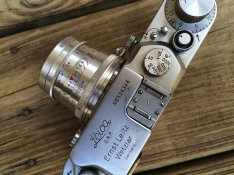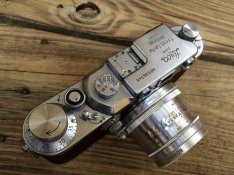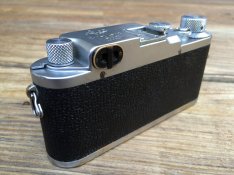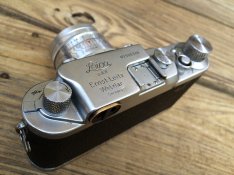If I were going to get Leica glass I would like a Summitar 50mm f/2 collapsible but most I see are in an optically questionable condition and quite expensive even so. I read the front element glass is soft and it's hard to find a good one. True? Is the f/3.5 going to be better? Am I just as good with an Industar at that point?
I have a 1939 Summitar, what you said is true for the old ones like mine (also, they usually have 10 blades)...the glass is UNCOATED and gets scratched very easily. Plus, it flares like a maniac.
IMO a good Industar 26m/early 61 is a better performer than an old Summitar (can't speak for postwar ones with 6 blades and coating, though), they are a tad slower tough. The Industar 50 is a Tessar triplet too, f3.5 so more similar to an Elmar in terms of performance, if you can find one of these lenses in good conditions you can take pics like these:
First three shots were taken with a Leica IIIB and the I-50 (disregard the ugly tint from a bad scan) and the latter with one of the early I-60 with 10 blades and chrome barrel.
I bought the IIIb because it's a camera from 1939 so it was destined to the Summitar, but I wanted to test it with some Soviet glass, now I use these lenses on other cameras and I am very happy about them, but they are optically perfect, no scratches, no fungus, no haze. Most of the soviet stuff you find online is UGLY and they don't perform that great.
For the camera, I would suggest something more "evolved" than a Z1 or a II/III, a good starting point would be a Zorki 6 or a Fed 2: both cameras are similar, they are a cross between a Leica II and some design ideas taken from the Contax II (the glass is Zeiss, the datable back of the Z4 and Fed2 is a Contax idea and makes the load much easier, the Z6 does have a normal hinged door that is even better, the wide base rangefinder is also Contax down to the combined r/f) that makes them more handy than a Leica screw mounted.
The same rules apply to them: you have to buy them in good state otherwise they are junk and you'll get only frustration: both of them don't have slow shutter speeds so you don't have to worry about messing up the shutter and you can change the shutter speeds before or after advancing the film, the soviet cameras with that problem are those with slow speeds like the Z4.

























